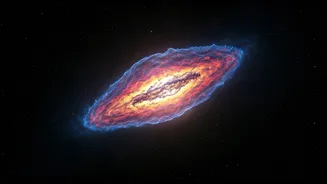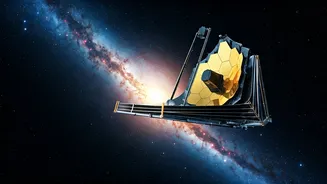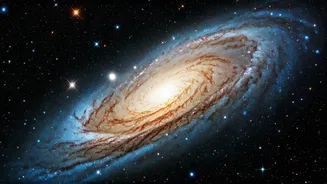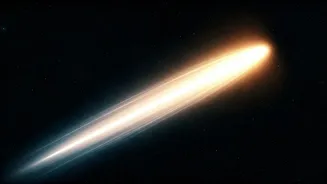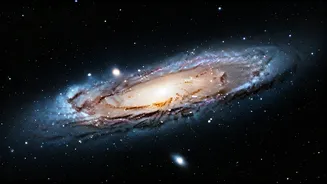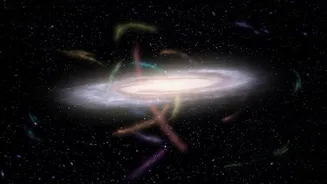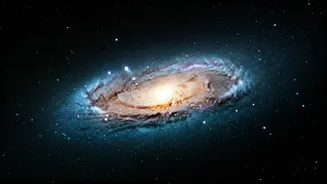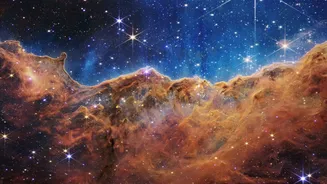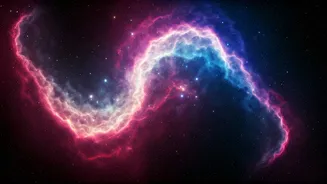Unveiling the Structure
Astronomers, through meticulous observation and data analysis, have identified a significant structure near the Milky Way's core. This structure, which
stretches approximately 200 light-years in diameter, was entirely unknown before its recent detection. The discovery was unexpected, as it challenges previous assumptions about the region's composition and activity. The team of scientists involved in the discovery expressed their surprise, stating that 'No one had any idea this cloud existed.' This unexpected find has prompted a reevaluation of existing models, pushing researchers to explore how this structure might be influencing the galactic center's dynamic processes and the energy it generates. The structure's size and proximity to the center suggest a significant role in the ongoing events within the galaxy.
Galactic Center Insights
The Milky Way's center is a dynamic region, housing a supermassive black hole known as Sagittarius A*. The newly discovered structure could be a crucial component in feeding this black hole. It potentially provides material or energy that sustains the processes occurring at the galactic center. This discovery offers valuable insights into how matter is distributed and interacts within the galaxy. The research suggests that the structure plays a role in the broader galactic environment. Its position and nature allow scientists to better understand the mechanisms that drive the behavior of the black hole and influence the activity within the galactic center. This region is critical for understanding the evolution and overall dynamics of the Milky Way.
Impact on Theories
The presence of this large structure compels astronomers to reconsider existing theories about the Milky Way's core. Many current models of the galactic center are based on assumptions that did not account for this large, previously undetected structure. Its discovery will force the refinement and adjustment of the current theories to align with this new evidence. Scientists will need to incorporate this finding into their simulations, which could lead to a more accurate understanding of the forces at play within the galaxy's center. Researchers anticipate that future studies will be required to comprehensively assess the role of this newly identified structure. This could lead to a completely new outlook on how galaxies, like our own, are formed and evolve, providing answers to long-standing questions.
Future Research Directions
This discovery opens the door for several future research avenues. Scientists can now focus on understanding the structure's composition and how it interacts with its surrounding environment. Detailed studies into this structure can lead to the identification of the materials it is composed of, and also to decipher its origin and evolution. Astronomers intend to use advanced observational techniques. They are working on mapping the structure's density, temperature, and magnetic fields to provide a comprehensive analysis of its properties. In the long term, the information obtained from studying this structure could enable us to get more knowledge about the origins and evolution of the Milky Way. This includes the dynamics of its central region, as well as the behavior of its supermassive black hole.
